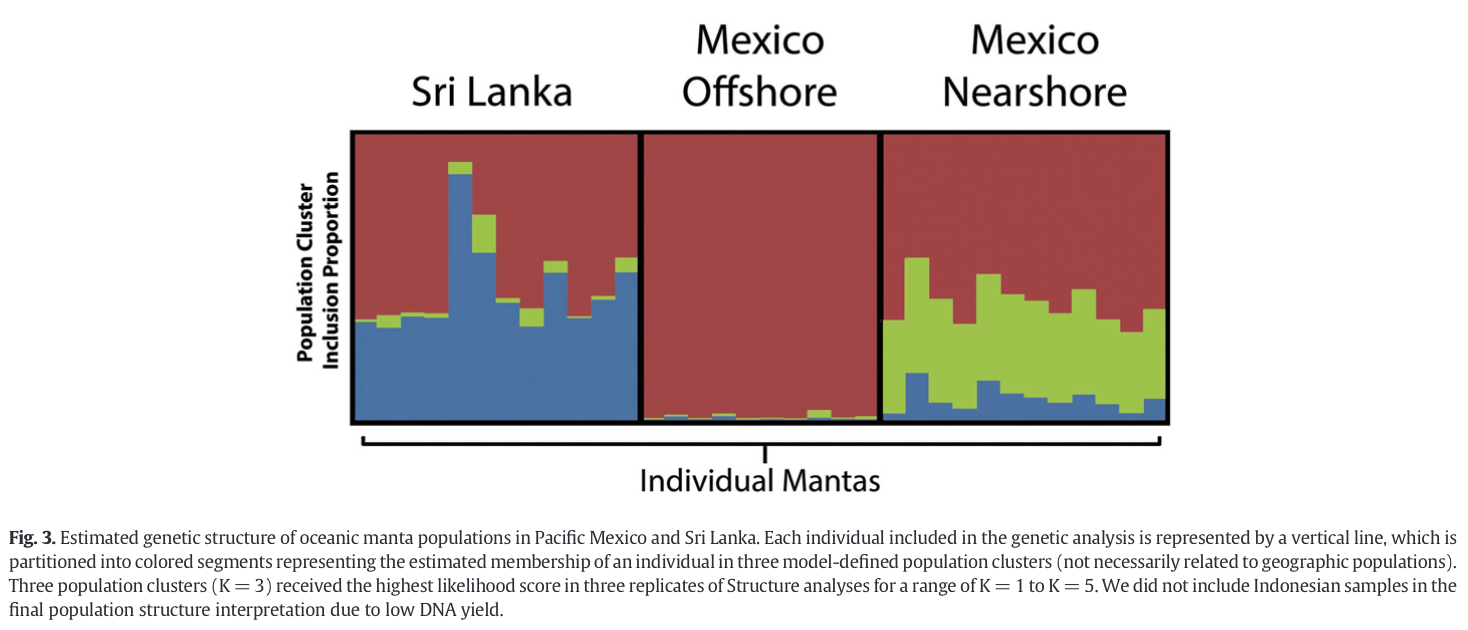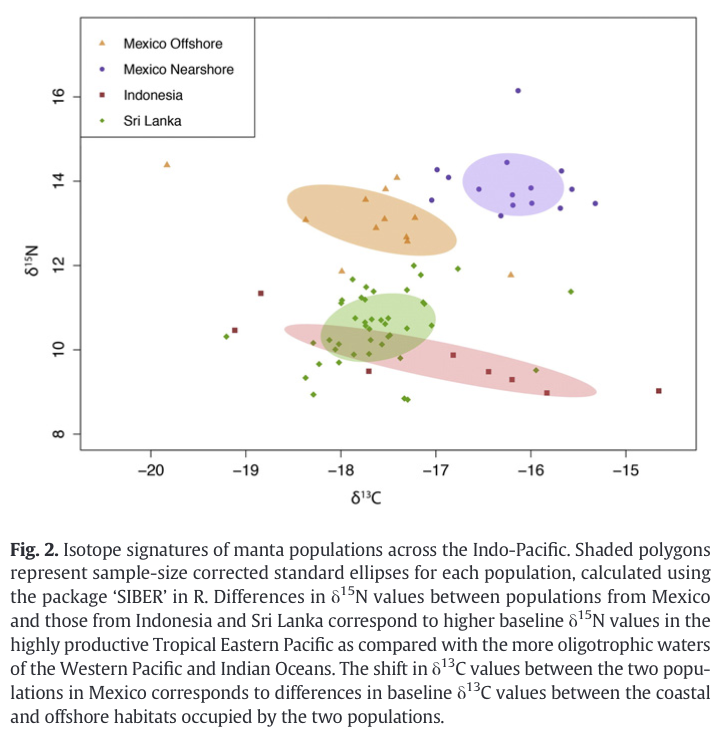Spatial ecology and conservation of Manta birostris in the Indo-Pacific
August 2016
Joshua D.Stewart, Calvin S.Beale, Daniel Fernando, Abraham B.Sianipar, Ronald S.Burton, Brice X. Semmens & Octavio Aburto-Oropeza
Keywords: ddRAD sequencing • Marine conservation • Mobulid • Pop-off satellite archival tagging • Stable isotope analysis • Spatial ecology • Manta birostris • Indo-Pacific



Summary: Limited information exists on the movements and population connectivity of oceanic manta rays (Mobula birostris). Previous assumptions suggested high migratory behaviour due to their pelagic habitats, but this study challenges that notion. Through satellite telemetry, stable isotope analysis, and genetic testing, it was found that oceanic mantas exhibit restricted movements and fine-scale population structure. Tagged individuals showed no long-range migrations and had distinct geographic ranges. Genetic and isotopic data confirmed these patterns over multiple years and generations. The findings suggest that local or regional management approaches may be more effective for oceanic manta conservation compared to international-scale strategies. Aligning management with relevant ecological processes is crucial for effective conservation efforts.
Abstract
“Information on the movements and population connectivity of the oceanic manta ray (Manta birostris) is scarce. The species has been anecdotally classified as a highly migratory species based on the pelagic habitats it often occupies, and migratory behavior exhibited by similar species. As a result, in the absence of ecological data, population declines in oceanic manta have been addressed primarily with international-scale management and conservation efforts. Using a combination of satellite telemetry, stable isotope and genetic analyses we demonstrate that, contrary to previous assumptions, the species appears to exhibit restricted movements and fine-scale population structure. M. birostris tagged at four sites in the Indo-Pacific exhibited no long-range migratory movements and had non-overlapping geographic ranges. Using genetic and isotopic analysis, we demonstrate that the observed movements and population structure persist on multi-year and generational time scales. These data provide the first insights into the long-term movements and population structure of oceanic manta rays, and suggest that bottom-up, local or regional approaches to managing oceanic mantas could prove more effective than existing, international-scale management strategies. This case study highlights the importance of matching the scales at which management and relevant ecological processes occur to facilitate the effective conservation of threatened species.”
Author Affiliations
Scripps Institution of Oceanography, University of California
The Manta Trust
Raja Ampat Manta Project
Department of Biology and Environmental Science, Linnaeus University
Blue Resources
Conservation International
Funded by
The PADI Foundation
Marine Conservation and Action Fund by New England Aquarium
Save Our Seas Foundation
Carl F. Bucherer
Misool Baseftin
Conservation International
SEA Aquarium (Singapore)
The Punta Mita Foundation
CIMEC
Gulf of California Marine Program
Additional support: Wolcott Henry, Monique Bar, David Connell, Eric Krauss, Mary O′Malley, Lupo Dion


